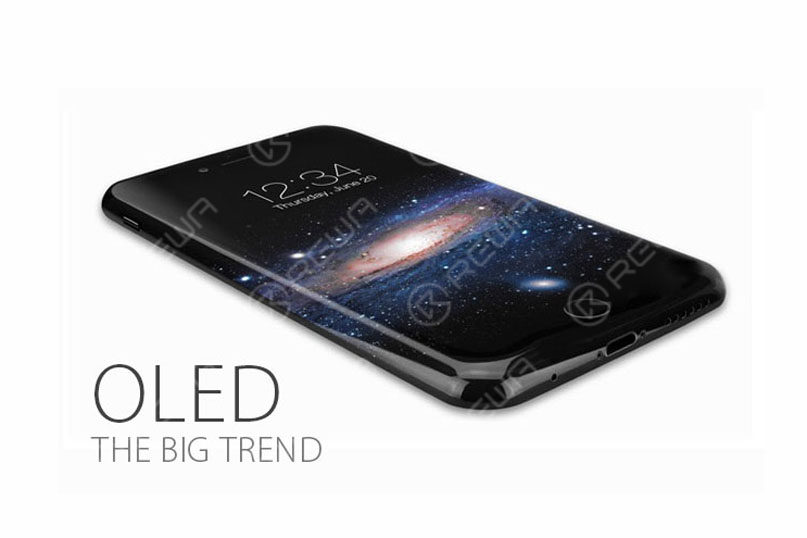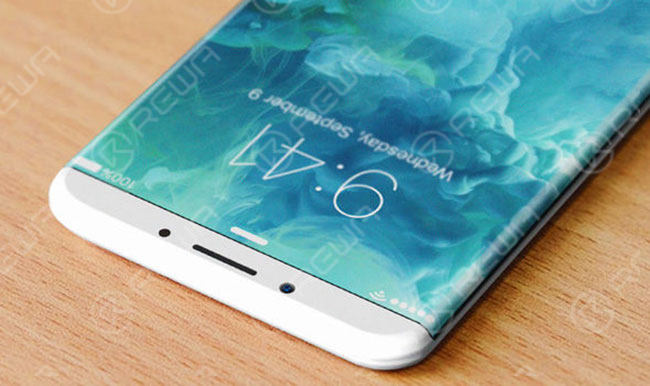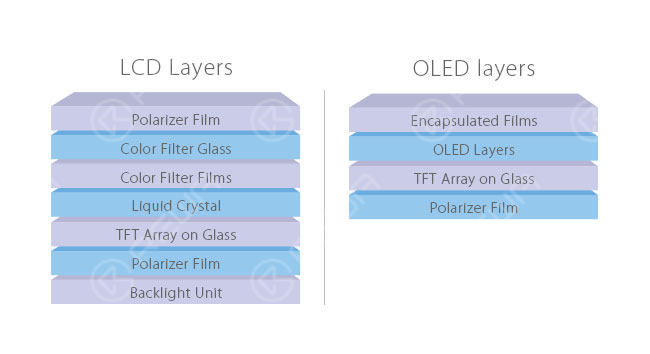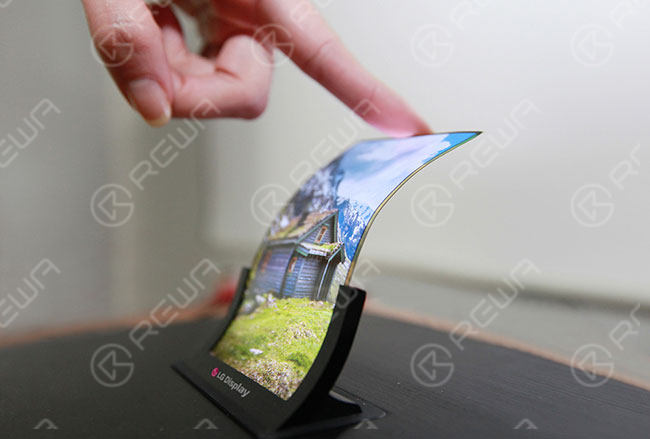OLED-The Big Trend

Countless reports claimed that Apple would apply AMOLED displays on their next iPhone. OLED has become a hot topic and inevitable trend since the news emerged. What is OLED? What are the differences between OLED and LCD? Will it affect the supply of China Made iPhone Screens? We’ve got all the answers you want to know as below.
What is OLED? OLED, which stands for Organic Light Emitting Diode, is made from organic light emitting materials that emit light when current is passed through it, being considered as a thin-film display technology.

Main types of OLEDs
The two most widely used OLED technologies are AMOLED and PMOLED. The market of PMOLED is much smaller and more fragmented than AMOLED’s, as well as the development prospects. News from trusted source reveals that Apple is expected to use AMOLED display in the iPhone 8 to save its shipments, which is in a continued decline.
What are the differences between OLED and LCD?
The biggest difference between these two kinds of technologies is that they have different structures, which really makes sense at the performance and application. Since OLED does not require backlight and filters (unlike LCD displays), It is more efficient and much thinner - and in fact, can be made flexible and even rollable. 
Below are the major differences between LCD and OLED derived from the disparate structures.
1. Backlight. LCDs require a backlight but OLEDs do not need, they are self-luminous.
2. Size. Due to the absence of backlight modules, OLEDs are thinner and lighter than LCDs.
3. Black level. Compared with the “black” screens of LCDs, OLEDs can produce truly black screens. For OLED, black pixels are simply pixels that emit no light at all. However, for LCD, black pixels are done by covering all the white light with the help of filter. Actually, this process turns out to be very difficult ---there is always an amount of light being leaked.
4. Power consumption. In a general way, OLEDs consume less power than LCDs for their self-light-generating. However, this is not always the case. When white screens are far more than black screens, LCDs win the battle of power consuming. The advantage of OLEDs comes from black screens.
5. Viewing angles. The thinner technology and closer pixels enable OLEDs the excellent viewing angles. That means you can get qualified pictures no matter which angle you look from, dead center or far aside. Situations are generally worse in LCDs. Depending on different display technologies, LCDs vary hugely from each other.
6. Color. Colors of OLEDs were not so desirable and it's hard to keep them realistic in the past. While now, it is much better for the application of new technologies. Diversified as LCDs are, their performances are unlike depending on the specific technology used. Like IPS and VA, after being properly calibrated, they can provide great color accuracy –iPhone 6s LCD is a vivid example of a phone with top color accuracy.
7. Price. Affordable price is one of the advantages of LCD. However, this supremacy would fade away in the long run as the rapid development of OLED.
8. Lifespan. Undoubtedly, the comparatively long lifespan is another advantage of LCD. OLED is a little bit worse at this aspect due to the short lifespan of the blue organic material.

What will the OLED bring to mobile phone repair industry?
If the next iPhone features OLED screen, what will happen in the mobile phone repair industry? Many people have struggled with this problem since the news bubbled. Judging from the market demand, Chinese iPhone Screens have dominated half of the shipments from the last quarter of 2015.
Will the application of OLED affect the supply of China Made Screens? It’s hard to say, really. As the mainstream OLED suppliers, Samsung and LG have already acquired a monopoly position. Chinese manufacturers, like BOE and Tianma, are trying to catch up with the tendency, but there are still some gaps existed. There are likely to be some difficulties to meet the demand of OLED China Made iPhone Screens in the short term if the technology is truly employed. Whereas the age of OLED is right around the corner, and China Made Screens will eventually come back with surprise. How to replacement this screen? You can read our Samsung Galaxy S7 edge glass replacement guide.
0
0



No Comments

0
0
Share

Apr 23, 2021
ABOUT REWA
REWA is a world leading electronics repair business solutions provider who was founded in 2008 in HongKong. We are committed to delivering one-stop services covering Sourcing Solution, Technical Support Solution as well as Recycle & Resell Solution.


 Sign In
Sign In

 Shop
Shop

 Academy
Academy







